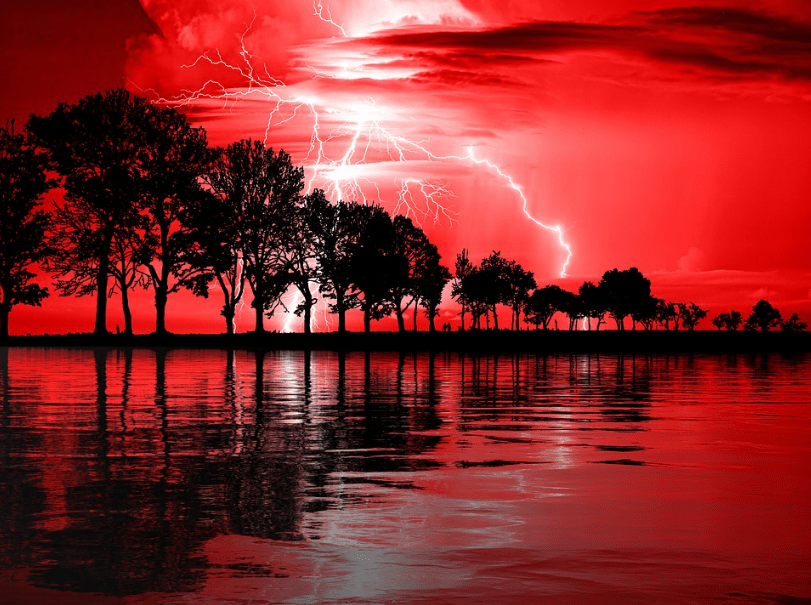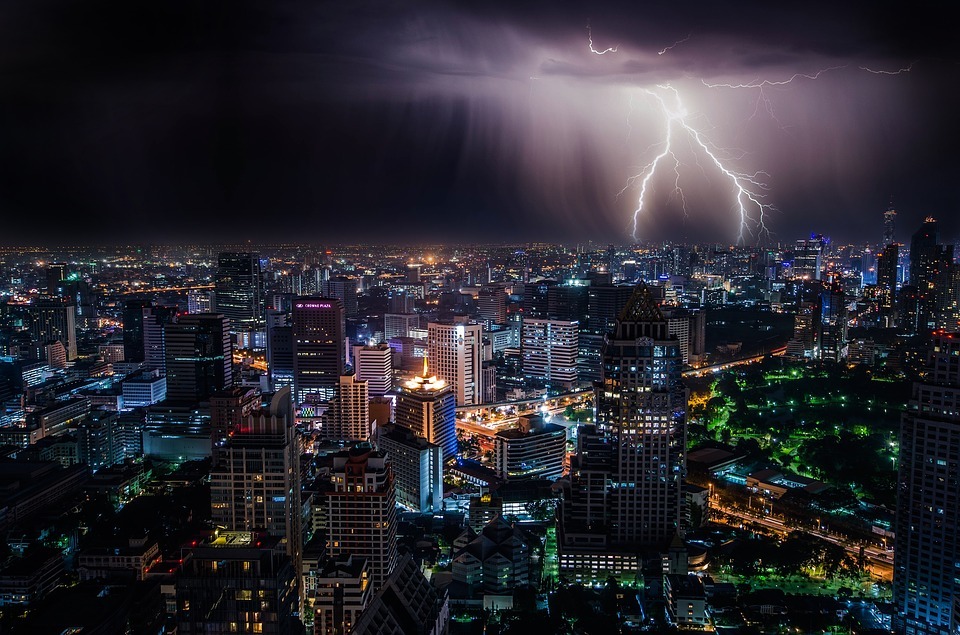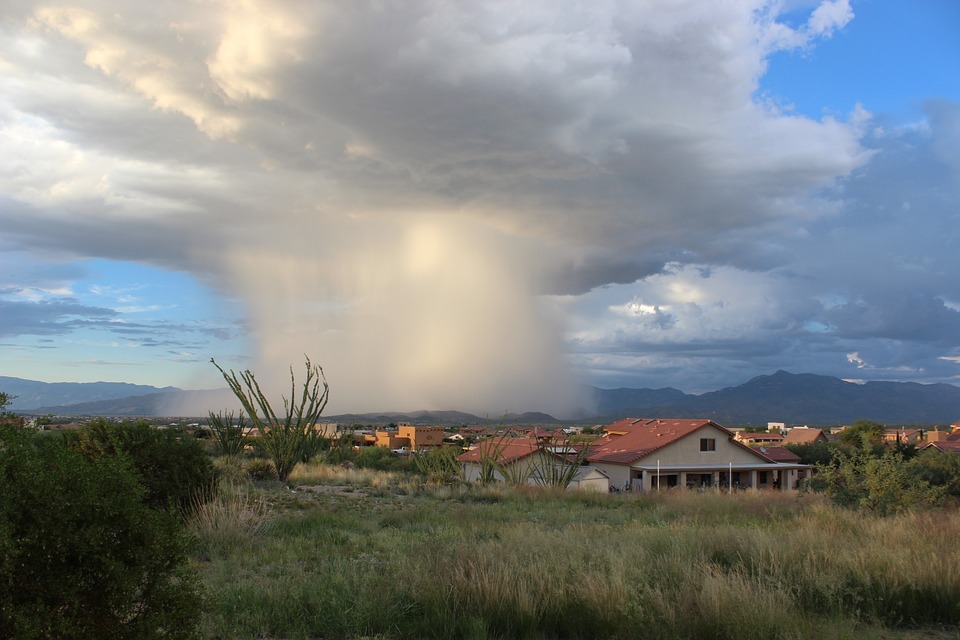What Is the Impact of Unexpected Snowfall?
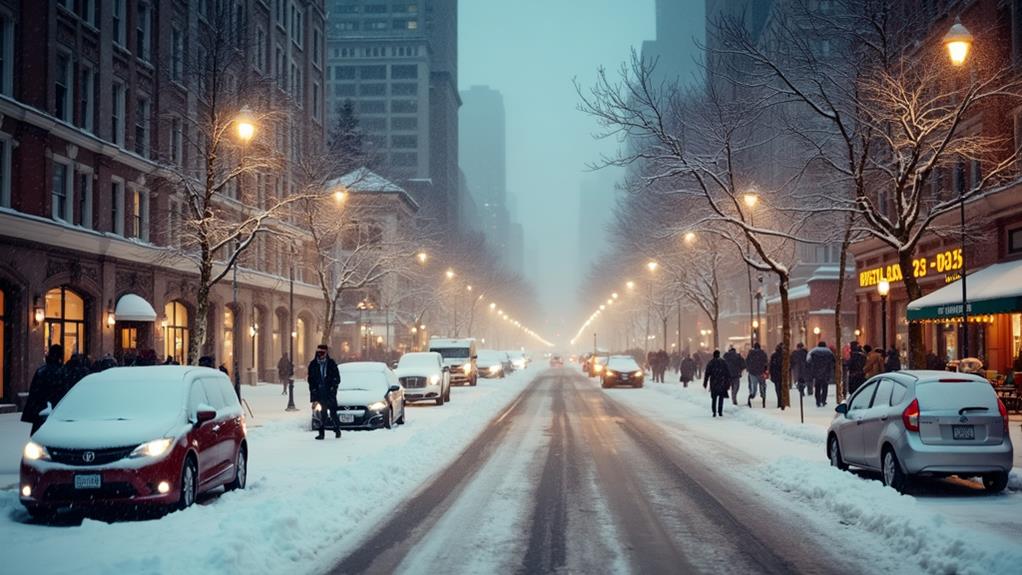
Unexpected snowfall can greatly disrupt your daily life. It can reduce visibility on roads, leading to more accidents and delays. Buildings might suffer damage from heavy snow accumulation and ice dams. You're also at higher risk of slips and falls, and emergency services may take longer to reach you. Economically, it hampers retail and travel, costing billions. To stay safe, guarantee clear communication, stockpile supplies, and have a snow removal plan in place. There's much more to understand about how unexpected snowfall impacts multiple aspects of life.
Key Takeaways
- Unexpected snowfall drastically reduces visibility, leading to increased traffic accidents and hazardous driving conditions.
- Heavy snow accumulation can cause significant structural damage, including roof collapses and ice dams.
- Public safety is compromised due to sudden visibility drops and increased emergency response times during major snowfall events.
- Economic impacts include substantial costs for snow removal, disrupted retail and tourism activities, and airline losses.
- Preparedness measures, such as emergency kits and snow removal plans, are essential to mitigate the adverse effects of unexpected snowfall.
Transportation Disruptions
When unexpected snowfall hits, it can wreak havoc on transportation, drastically reducing visibility and causing a significant spike in traffic accidents. Heavy snowfall often accumulates rapidly on roadways, making travel conditions hazardous. Snow squalls can exacerbate the situation, creating intense bursts of snow that drop visibility below 1/4 mile in mere seconds. When you're driving, this sudden loss of visibility can lead to dangerous situations on the road, increasing the likelihood of accidents.
Transportation disruptions don't just stop at individual vehicles; they ripple through entire systems. Interstates, critical for interstate commerce, can become impassable, delaying shipments and affecting economic activities. Road safety becomes a primary concern, as transportation agencies struggle to keep up with clearing and maintaining roads during these unexpected snow events.
Studies have shown a direct correlation between snowfall severity and crash rates, emphasizing the critical need for adaptive traffic management systems. These systems could help mitigate the risks, ensuring that emergency response teams can act swiftly and effectively. Ultimately, the impact of heavy snowfall extends beyond immediate accidents, affecting the broader economic landscape through vehicle damage, increased emergency response costs, and delays in interstate commerce.
Structural Damage
Heavy snowfall can wreak havoc on buildings, leading to significant structural damage if not managed properly. When heavy snow accumulates on your roof, it can create ice dams. These ice dams block proper drainage, causing water to seep into your home and damage the structure. Snow accumulation can be especially problematic if it's unexpected, as older buildings might not be prepared to handle the sudden weight.
Roofs are typically designed to support about 20 lbs of snow per square foot. Exceeding this limit, especially with packed snow, can lead to structural failure. Packed snow is much heavier than fresh snow, so timely removal is essential to prevent damage. Ignoring this can result in costly repairs and a compromised building integrity.
Regular roof inspections and maintenance before winter are imperative. They help you identify vulnerabilities that could be exacerbated by unexpected snowfall. If you don't address these issues in advance, the weight of heavy snow can cause significant structural damage. Ensuring your roof is in good condition can save you from the headaches and expenses of emergency repairs. Don't wait until it's too late; take action now to protect your property.
Public Safety Concerns
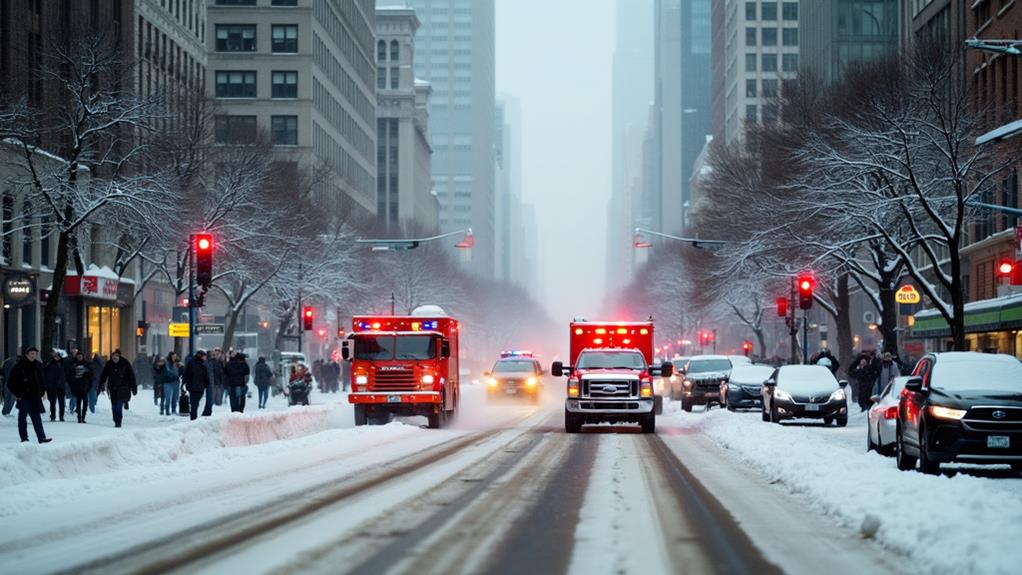
While structural damage from unexpected snowfall poses serious concerns, public safety risks are likewise alarming. When a winter storm hits, visibility can plummet to less than a quarter mile within moments, especially during snow squalls. This sudden drop in visibility creates hazardous driving conditions that can lead to a spike in accidents.
Snow accumulation on roadways is another major issue. Regression analyses have shown that as snowfall severity increases, so does the frequency of traffic incidents. Even a small amount of ice can turn roads into dangerous slip zones, making travel conditions treacherous. A light glaze of ice can be as hazardous as several inches of snow, causing slips and falls that can lead to serious injuries.
Emergency response times often suffer during heavy snowfall events. Road obstructions and perilous travel conditions delay assistance, putting individuals in need of urgent help at greater risk. Public safety campaigns play a vital role in raising awareness about these dangers. They educate you on the risks of traveling during unexpected snowfall and the importance of indoor safety measures, ensuring you're prepared for what a winter storm can bring. Stay informed and cautious to protect yourself and others.
Economic Impacts
Unexpected snowfall can wreak havoc on the economy, with winter storms costing the U.S. around $1 billion per week in direct expenses like snow removal and lost productivity. When you think about the economic impacts, consider the following:
- Retail sales: Severe snowfall often keeps customers at home, which means fewer shoppers and a drop in sales revenue during vital winter months.
- Transportation sector: Airlines face delays and cancellations, leading to losses estimated at $1.5 billion during major winter weather events. Road transportation also suffers, with increased accidents and slower delivery times.
- Emergency services: Cities and towns have to ramp up their snow removal efforts, which strains budgets and increases operational costs. Public safety efforts also contribute to these economic losses.
- Tourism: Seasonal businesses reliant on tourists, like ski resorts and winter attractions, can see sudden declines in visitors. Snowstorms limit access and discourage travel, reducing total visitor spending.
Unexpected snowfall doesn't just inconvenience your daily life—it has a ripple effect that disrupts numerous economic sectors. The costs of these winter storms add up quickly, impacting everything from your shopping habits to your travel plans, and putting extra pressure on emergency services and local economies.
Emergency Preparedness
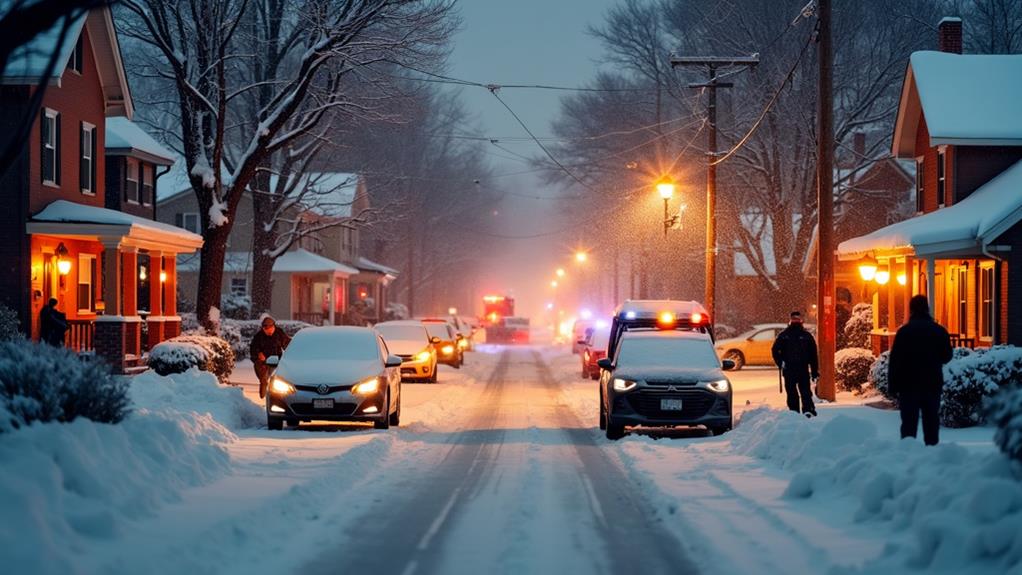
Preparing for unexpected snowfall is vital to guaranteeing community safety and minimizing disruptions. You need to start by understanding your local weather patterns and staying informed about potential heavy snowfall. Effective emergency preparedness involves establishing clear communication protocols so everyone knows evacuation routes and emergency shelters.
To mitigate the significant impact of sudden snowstorms, stockpile important supplies and maintain emergency kits in your home. This proactive measure guarantees you're equipped to handle severe weather conditions. Local authorities play a key role by implementing snow removal plans and prioritizing road clearing. This assures accessibility and safety when snow accumulates unexpectedly.
Public awareness is another important aspect. Stay informed through weather alerts and advisories, which provide updates on sudden changes in snowfall patterns. These alerts can be lifesaving, helping you make timely decisions during emergencies.
Collaboration is key during these times. Emergency services and community organizations must work together to address the needs of vulnerable populations. This united effort guarantees that no one is left behind during heavy snowfall events.
Frequently Asked Questions
What Is the Negative Impact of Snowfall?
Snowfall's negative impact includes road closures and transportation delays, making travel treacherous. Power outages occur when heavy snow weighs down lines and branches, causing widespread disruptions. Property damage, like roof collapses and ice dams, is common. Health hazards rise due to accidents and exposure. Economic losses hit businesses hard, halting operations and reducing revenue. Emergency services face heightened demand, struggling to reach those in need quickly.
How Does Snow Impact People?
When snow hits, you face transportation challenges and winter safety concerns. Snow activities bring joy, but community response must tackle economic effects and health implications. Roads become hazardous, affecting daily commutes and increasing accident risks. Power outages disrupt businesses and homes, leading to financial strain. Environmental changes from snow impact wildlife and ecosystems. Generally, snow can markedly alter your routines and require careful planning and precautions.
What Are the Consequences of Too Much Snow?
When there's too much snow, you'll face snow removal challenges and transportation delays. Infrastructure damage becomes a concern as heavy snow can cause roofs to collapse and roads to crack. Power outages are common when tree limbs fall on power lines. Economic costs rise due to repair and cleanup efforts. Emergency services might struggle to reach you, impacting public safety. In general, excessive snow can create significant disruptions.
What Is the Effect of Snow Fall?
Snowfall impacts everything around you like a domino effect. Rapid snow accumulation can cause travel disruptions and strain infrastructure. You'll notice economic effects as businesses close and winter sports enthusiasts either rejoice or face challenges. Ecosystem changes can occur, affecting local wildlife. Emergency preparedness becomes essential to handle power outages and structural damage. Stay proactive with regular roof inspections and timely snow removal to keep everyone safe.

